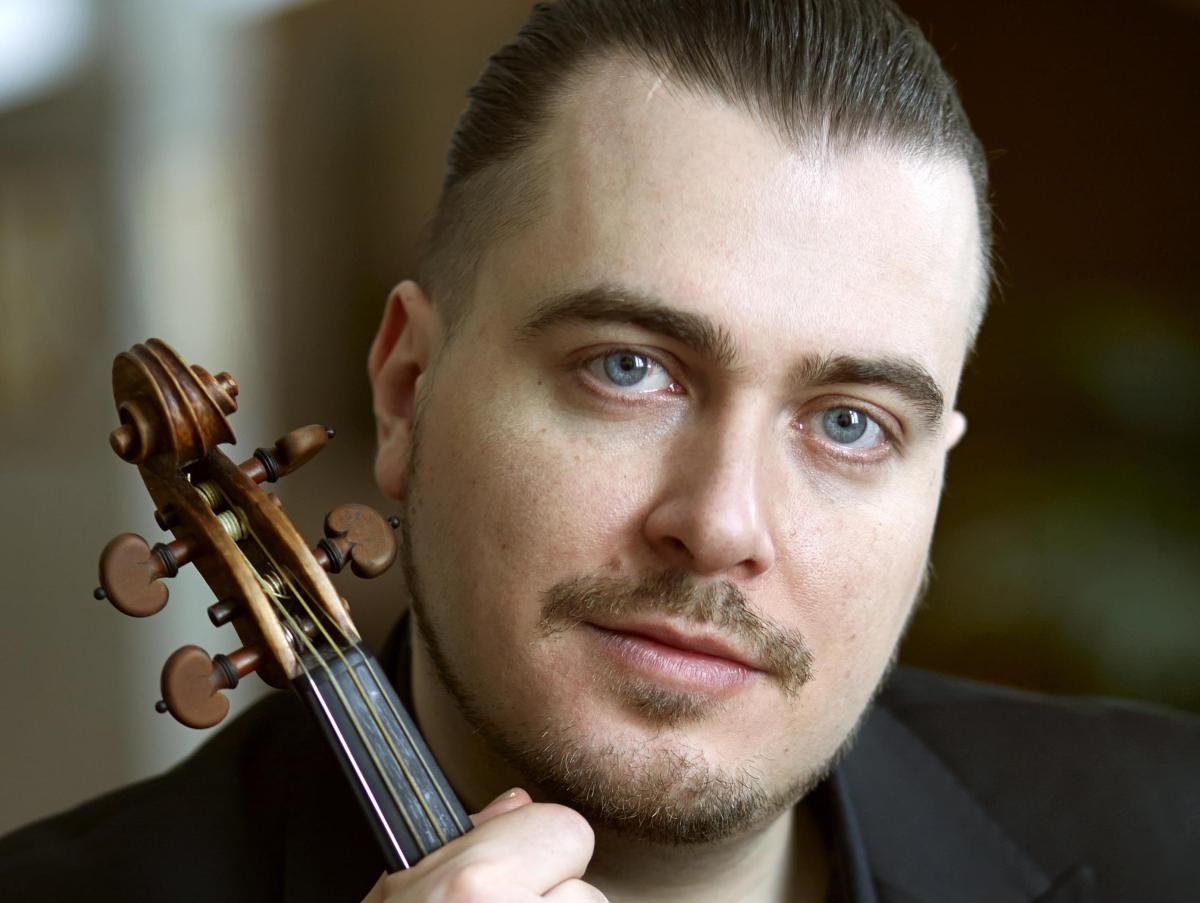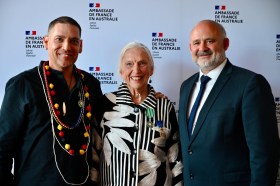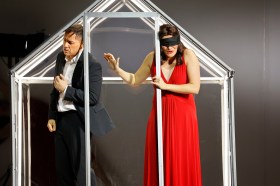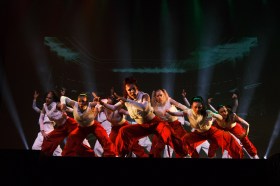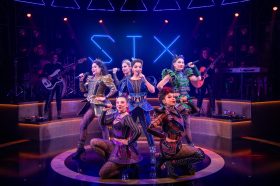Dmitry Sinkovsky. Image supplied by the Australian Brandenburg Orchestra.
When music doesn’t work it is the silence that you notice, especially in a slow piece or movement. The pauses between notes can seem excessive and indulgent, and one becomes impatient to get on with it, hoping the next piece might have got the balance right. When music does work, however, the pauses seem mysterious and ethereal; they envelop each note in a delicate fog that echoes in the mind long after the sound has died out in the hall. The notes themselves seem much less mechanical expulsions from the composer’s mind, but rather whims of genius from the players themselves. This concert, featuring Dmitry Sinkovsky as Guest Director of the Australian Brandenburg Orchestra, was full of such balanced wonders, and the City Recital Hall, bathed in hues of blue light, was the host for the evening of glorious music.
Dmitry Sinkovsky, complete with tied-back shoulder length locks and stylised facial hair, is a genial and warm presence on stage, but he is also an enthusiastic one. Artistic Director Paul Dyer, for once facing the audience while playing his harpsichord (as opposed to having his back to them while conducting from it), ceded centre stage to Sinkovsky, no doubt basking, like the rest of the audience, in the violinist’s musical charisma. Beginning with Vivaldi’s ‘Concerto in C Major RV 177’, he demonstrated a lightness and surety of touch that captured the attention from the start. This continued into Corelli’s ‘Concerto Grosso Opus 6 No.11 in B flat major’, as he led the other soloists, along with the orchestra whole, through a series of movements that were characterised by great choices of tempo and skillful delineation in approach. The first half finished with Vivaldi’s ‘Concert in D minor RV 246’, with cadenzas that were flashy but didn’t seem to be – just the way they should be.
After the interval came Vivaldi’s ‘Cessate, omai cessate, Cantata RV 684 for alto, strings and continuo’, which let Sinkovksy, quite literally, let his hair down. Untied and flowing about his shoulders, he gave up his violin, for the most part, and treated us instead to a countertenor performance. This is, as you can imagine, something of an rarity, at least on Sydney concert platforms, to have a person who has achieved such a high proficiency in two seemingly disparate fields of music. The work, which is about a spurned lover who wishes to dash his brains (and just about any other limb) on the rocks in despair, was an enjoyable one and technically solid on Sinkovsky’s part, but this critic felt much more interested in his violin playing. (He did, coincidentally, pick up the violin for a moment during the piece, to play a short passage or two in the style of the aria, though he never did both at the same time).
A piece of Charles Avison’s, based on one of Scarlatti’s, was next in the program, but on the night was replaced with yet another Vivaldi – his ‘Cello Concerto in A minor RV421’. (Rumour on the classical grapevine suggests that there was some trouble clearing the copyright with the 18th century composer.) The irony of it all is that Avison, an avid opponent of the extravagance found in the music of composers such as Vivaldi (and Handel, among others) was replaced by his nemesis – but such is life in the canon. Principal cellist Jamie Hey gave a nuanced account of it, that came into its own in the second and third movements. Vivaldi, yet again, finished the concert with his ‘Concerto in D minor RV 242 Op 8 No 7 ‘Per Pisendel”, and Sinkovsky was just as impressive as before.
The audiences, both more than usually delighted, and egged on by those on stage, extracted four encores from the musicians, beginning with the first movement from The Winter part of Vivaldi’s Four Seasons. The next was an aria whose provenance zoomed straight past this critic’s ear, but whose title translated to ‘A Beautiful Plant’. After that was a piece dedicated by Sinkovsky to the victims of the MH17 airplane crash – ‘Cara Sposa’ by Handel, and we finished with the second movement, this time, from The Winter. All in all, a quite enlivening concert of Baroque music, and a showcase of a man’s great talent.
Rating: 4 ½ out of 5 stars
City Recital Hall, Angel Place
www.brandenburg.com.au
23 July – 1 August
Melbourne Recital Centre, Southbank
2 – 3 August

